The Effect of Different Nanomaterials Additions in Clay-Based Composites on Electromagnetic Transmission
Abstract
:1. Introduction
2. Materials and Methods
2.1. Materials
2.2. Methods
2.2.1. Brunauer-Emmett-Teller Surface Area Measurements
2.2.2. Powder X-ray Diffraction
2.2.3. Measurements of Thermal Properties
2.2.4. Morphology Investigation
2.2.5. Mineral Composition and Heavy Metals Content
2.3. Clay Test/Sample Preparation
3. EM Transmission Measurements
4. Results and Discussion
4.1. Properties of Nanomaterials
4.2. Measurements
4.3. Analysis of Test Results and Discussion
5. Conclusions
Supplementary Materials
Author Contributions
Funding
Institutional Review Board Statement
Informed Consent Statement
Data Availability Statement
Acknowledgments
Conflicts of Interest
References
- Gandhi, O.P. Electromagnetic fields: Human safety issues. Annu. Rev. Biomed. Eng. 2002, 4, 211–234. [Google Scholar] [CrossRef] [PubMed]
- Zed, K.A. Electromagnetic fields and public health: Extremely low frequency fields and cancer. Sci. Technol. Soc.-Jpn. 2007, 178, 1–4. [Google Scholar]
- Kwan-Hoong, N. Non-Ionizing Radiations—Sources, Biological Effects, Emissions and Exposures. In Proceedings of the International Conference on Non-Ionizing Radiation at UNITEN, Tokyo, Japan, 20–22 October 2003; pp. 1–16. [Google Scholar]
- Choi, S.B.; Kwon, M.K.; Chung, J.W.; Park, J.S.; Chung, K.; Kim, D.W. Effects of short-term radiation emitted by WCDMA mobile phones on teenagers and adults. BMC Public Health 2014, 14, 438. [Google Scholar] [CrossRef] [PubMed] [Green Version]
- Biolnitiative Working Group. Biolnitiative 2012: A Rationale for Biologically-Based Exposure Standards for Low-Intensity Electromagnetic Radiation; Bioinitiative. 2012, pp. 1–1557. Available online: www.bioinitiative.org (accessed on 31 December 2012).
- Singh, A.P.; Gupta, B.K.; Mishra, M.; Govind; Chandra, A.; Mathur, R.B.; Dhawan, S.K. Multiwalled carbon nanotube/cement composites with exceptional electromagnetic interference shielding properties. Carbon 2013, 56, 86–96. [Google Scholar] [CrossRef]
- Jung, M.; Lee, Y.S.; Hong, S.G. Effect of Incident Area Size on Estimation of EMI Shielding Effectiveness for Ultra-High Performance Concrete with Carbon Nanotubes. IEEE Access 2019, 7, 183105–183117. [Google Scholar] [CrossRef]
- Kuranchie, F.A.; Shukla, S.K.; Habibi, D. Utilisation of iron ore mine tailings for the production of geopolymer bricks. Int. J. Min. Reclam. Environ. 2016, 30, 92–114. [Google Scholar] [CrossRef]
- Micheli, D.; Vricella, A.; Pastore, R.; Delfini, A.; Bueno Morles, R.; Marchetti, M.; Santoni, F.; Bastianelli, L.; Moglie, F.; Mariani Primiani, V.; et al. Electromagnetic properties of carbon nanotube reinforced concrete composites for frequency selective shielding structures. Constr. Build. Mater. 2017, 131, 267–277. [Google Scholar] [CrossRef]
- Wen, S.; Chung, D.D.L. Electromagnetic interference shielding reaching 70 dB in steel fiber cement. Cem. Concr. Res. 2004, 34, 329–332. [Google Scholar] [CrossRef]
- Yuan, T.F.; Choi, J.S.; Kim, S.K.; Yoon, Y.S. Assessment of Steel Slag and Steel Fiber to Control Electromagnetic Shielding in High-Strength Concrete. KSCE J. Civ. Eng. 2021, 25, 920–930. [Google Scholar] [CrossRef]
- Mann, K.S.; Kaur, B.; Sidhu, G.S.; Kumar, A. Investigations of some building materials for γ-rays shielding effectiveness. Radiat. Phys. Chem. 2013, 87, 16–25. [Google Scholar] [CrossRef]
- Mann, H.S.; Brar, G.S.; Mann, K.S.; Mudahar, G.S. Experimental Investigation of Clay Fly Ash Bricks for Gamma-Ray Shielding. Nucl. Eng. Technol. 2016, 48, 1230–1236. [Google Scholar] [CrossRef] [Green Version]
- Wanasinghe, D.; Aslani, F.; Ma, G. Effect of water to cement ratio, fly ash, and slag on the electromagnetic shielding effectiveness of mortar. Constr. Build. Mater. 2020, 256, 119409. [Google Scholar] [CrossRef]
- Zhang, X.; Sun, W. Microwave absorbing properties of double-layer cementitious composites containing Mn-Zn ferrite. Cem. Concr. Compos. 2010, 32, 726–730. [Google Scholar] [CrossRef]
- Xie, Y.; Liu, B.; Yin, J.; Zhou, S. Optimum mix parameters of high-strength self-compacting concrete with ultrapulverized fly ash. Cem. Concr. Res. 2002, 32, 477–480. [Google Scholar] [CrossRef]
- Li, Z.; Dong, S.; Wang, X.; Yu, X.; Han, B. Electromagnetic Wave-Absorbing Property and Mechanism of Cementitious Composites with Different Types of Nano Titanium Dioxide. J. Mater. Civ. Eng. 2020, 32, 04020073. [Google Scholar] [CrossRef]
- Azadmanjiri, J.; Simon, G.P.; Suzuki, K.; Selomulya, C.; Cashion, J.D. Phase reduction of coated maghemite (γ-Fe2O3) nanoparticles under microwave-induced plasma heating for rapid heat treatment. J. Mater. Chem. 2012, 22, 617–625. [Google Scholar] [CrossRef]
- Yun, J.; Kim, H. Il Electromagnetic interference shielding effects of polyaniline-coated multi-wall carbon nanotubes/maghemite nanocomposites. Polym. Bull. 2012, 68, 561–573. [Google Scholar] [CrossRef]
- Kong, L.; Yin, X.; Zhang, Y.; Yuan, X.; Li, Q.; Ye, F.; Cheng, L.; Zhang, L. Electromagnetic wave absorption properties of reduced graphene oxide modified by maghemite colloidal nanoparticle clusters. J. Phys. Chem. C 2013, 117, 19701–19711. [Google Scholar] [CrossRef]
- Sun, H.; Liu, X.; Liu, B.; Yin, Z. Preparation and properties of antimony doped tin oxide nanopowders and their conductivity. Mater. Res. Bull. 2016, 83, 354–359. [Google Scholar] [CrossRef]
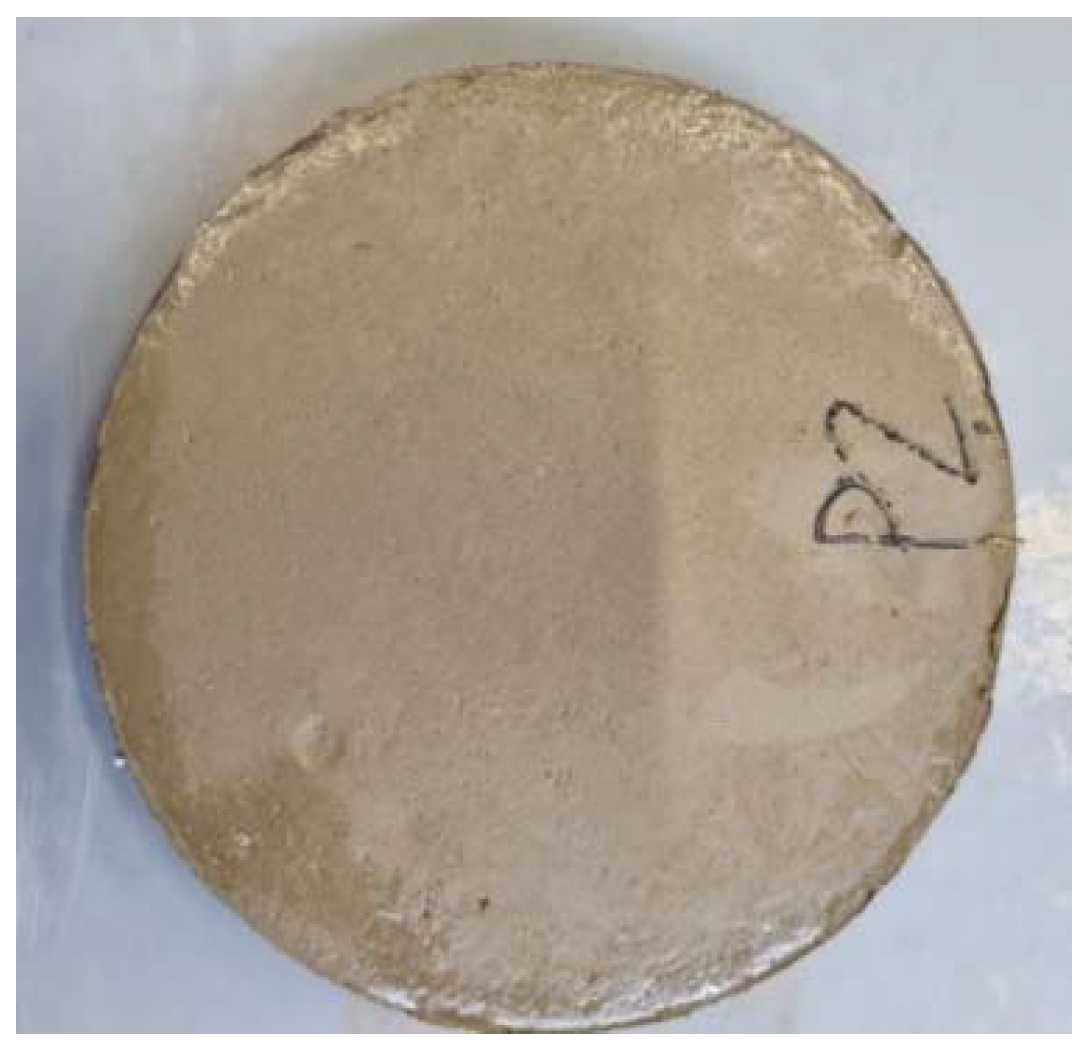
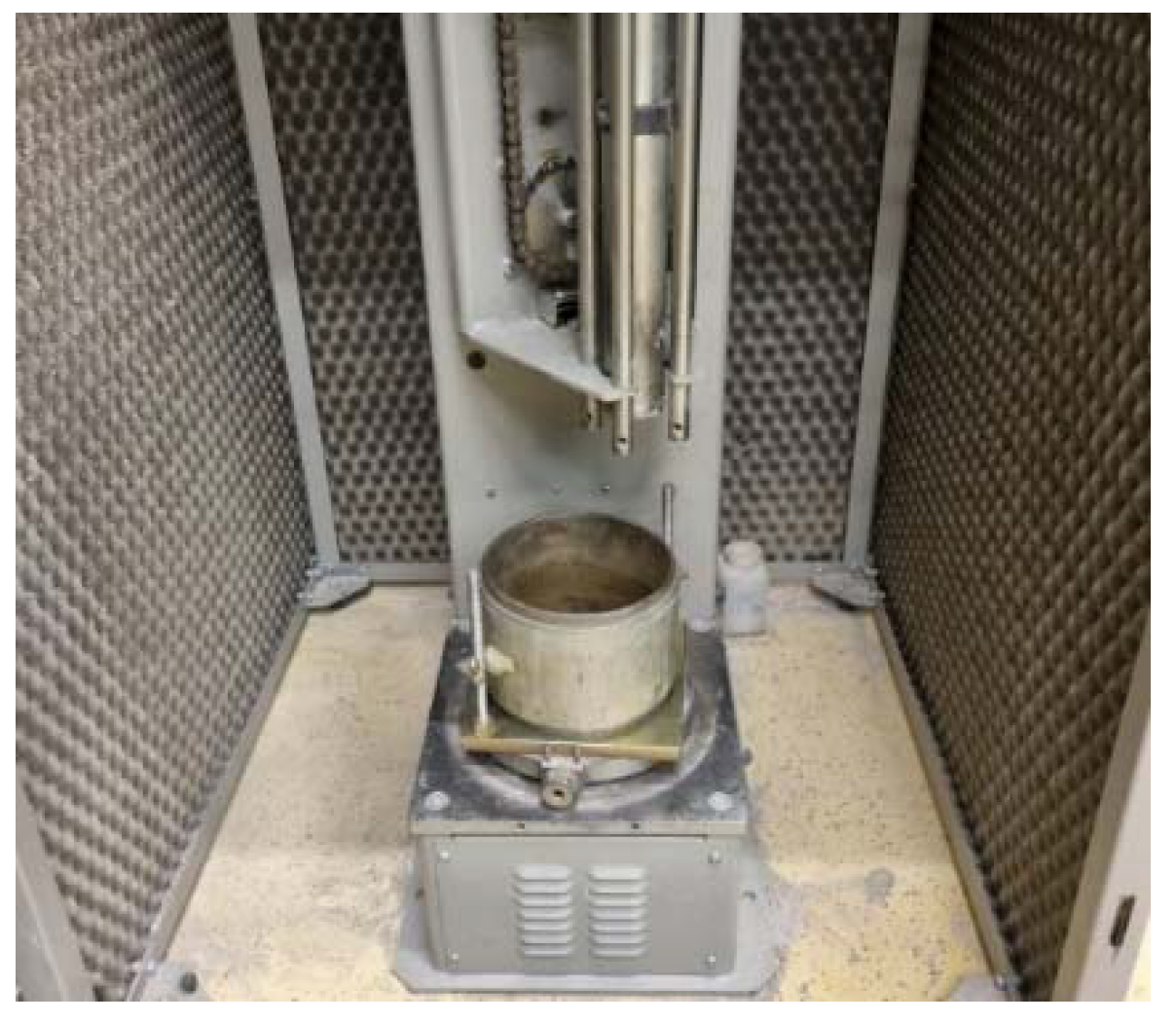



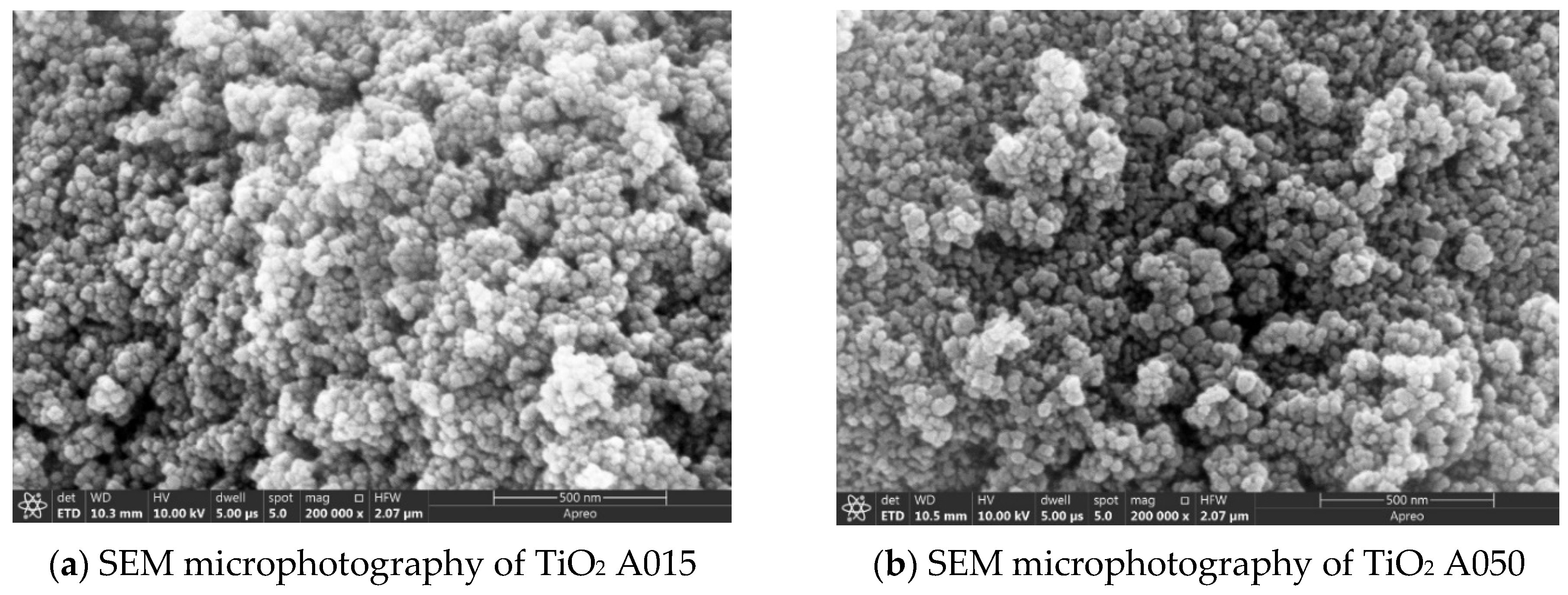
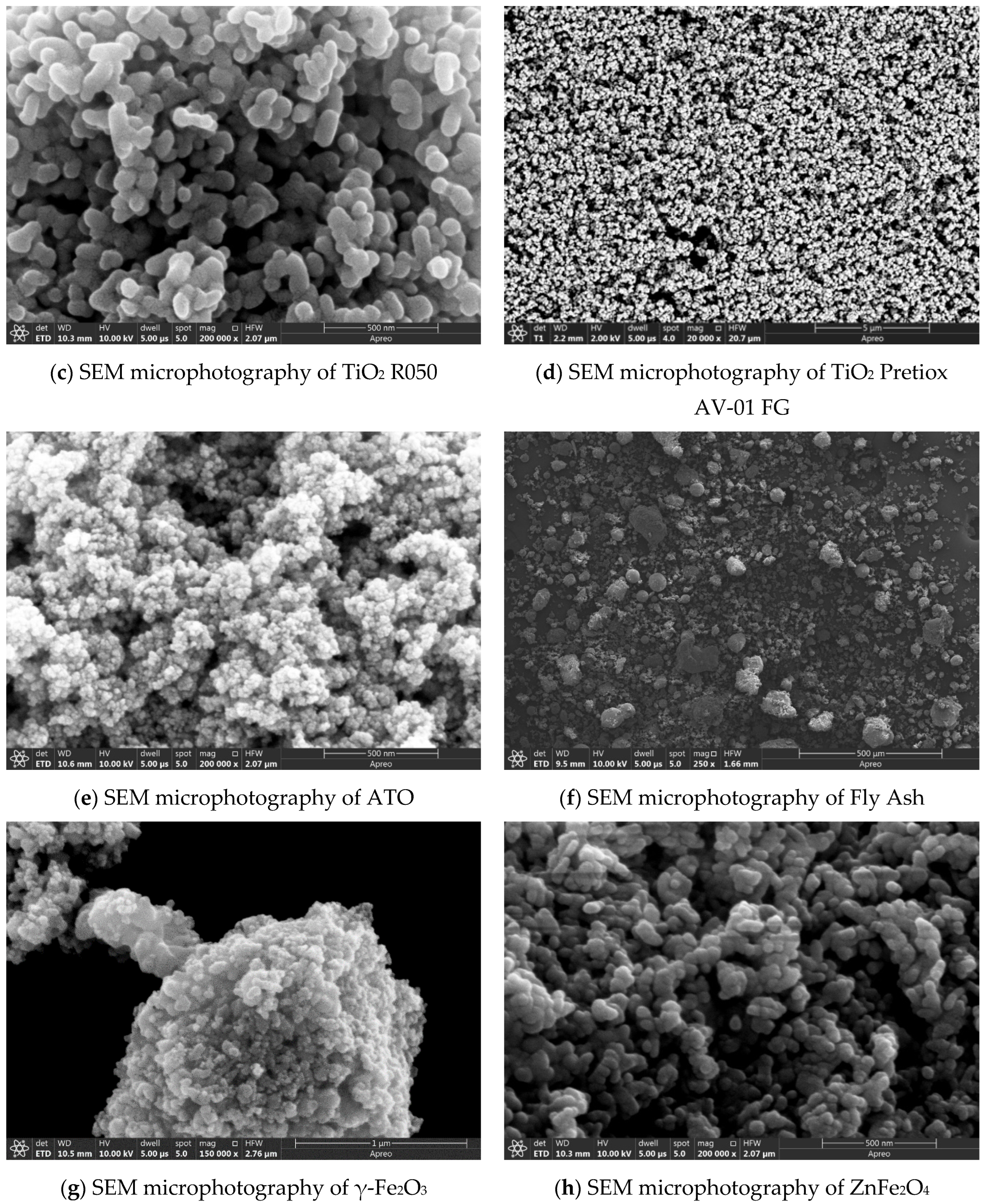
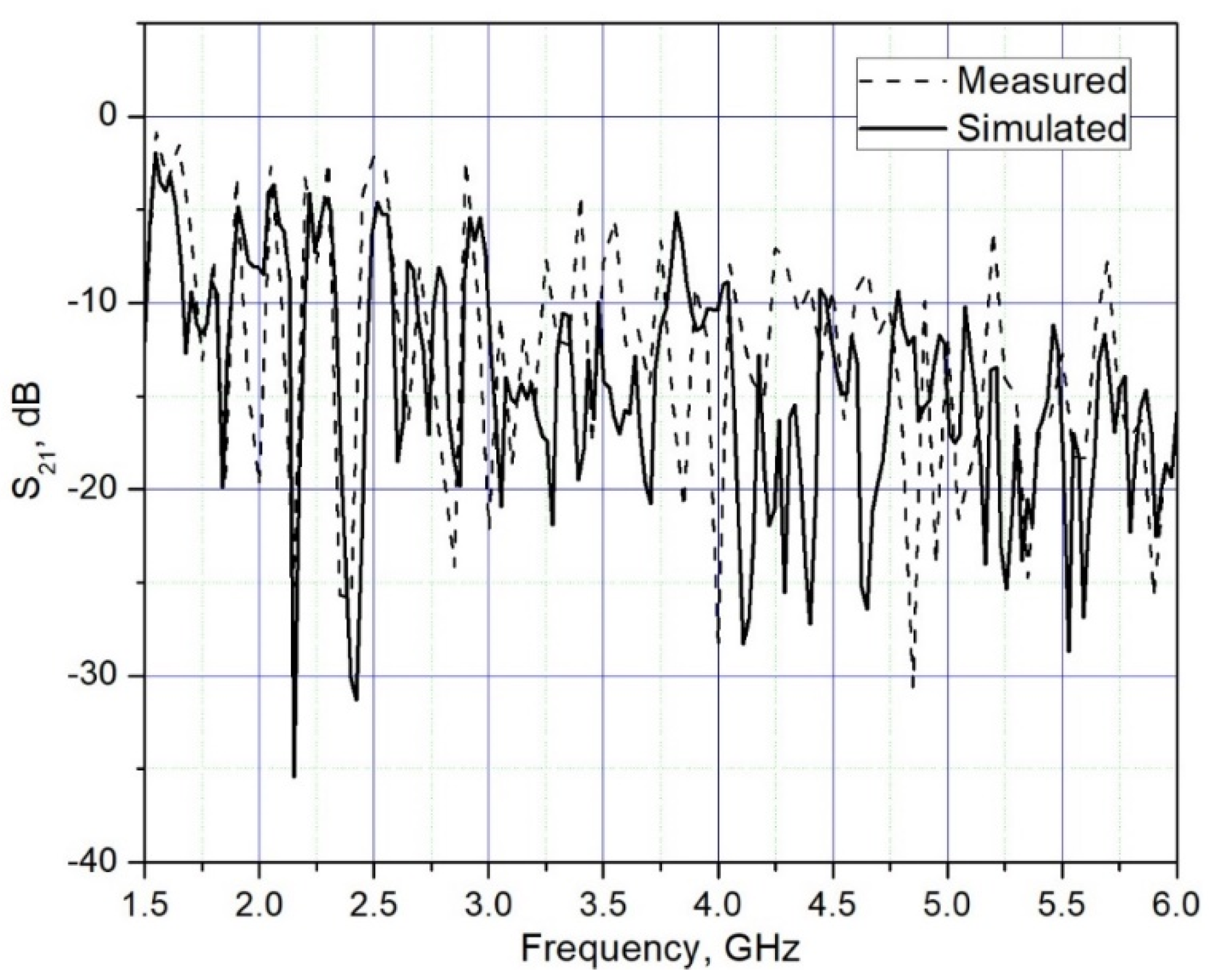
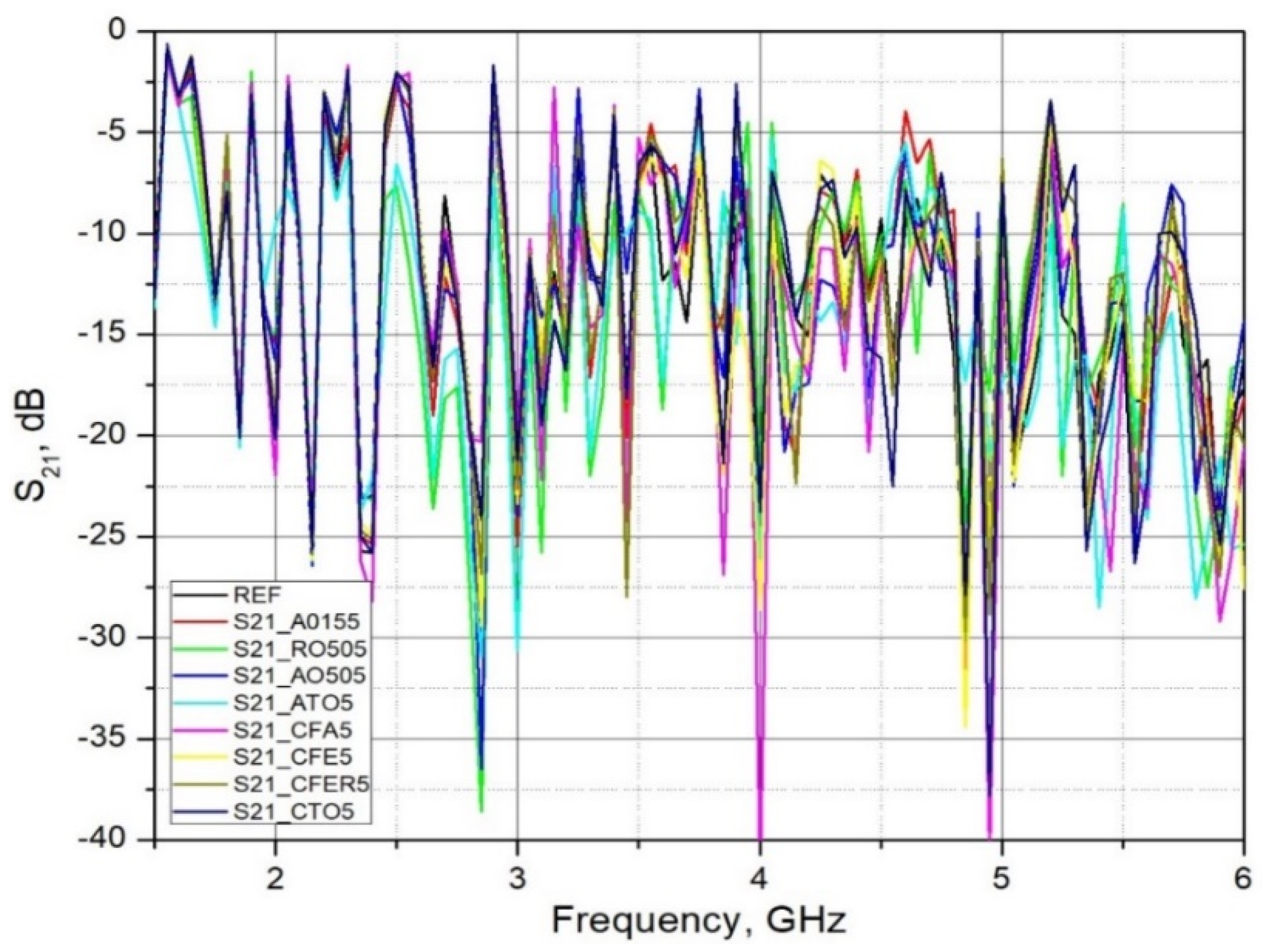

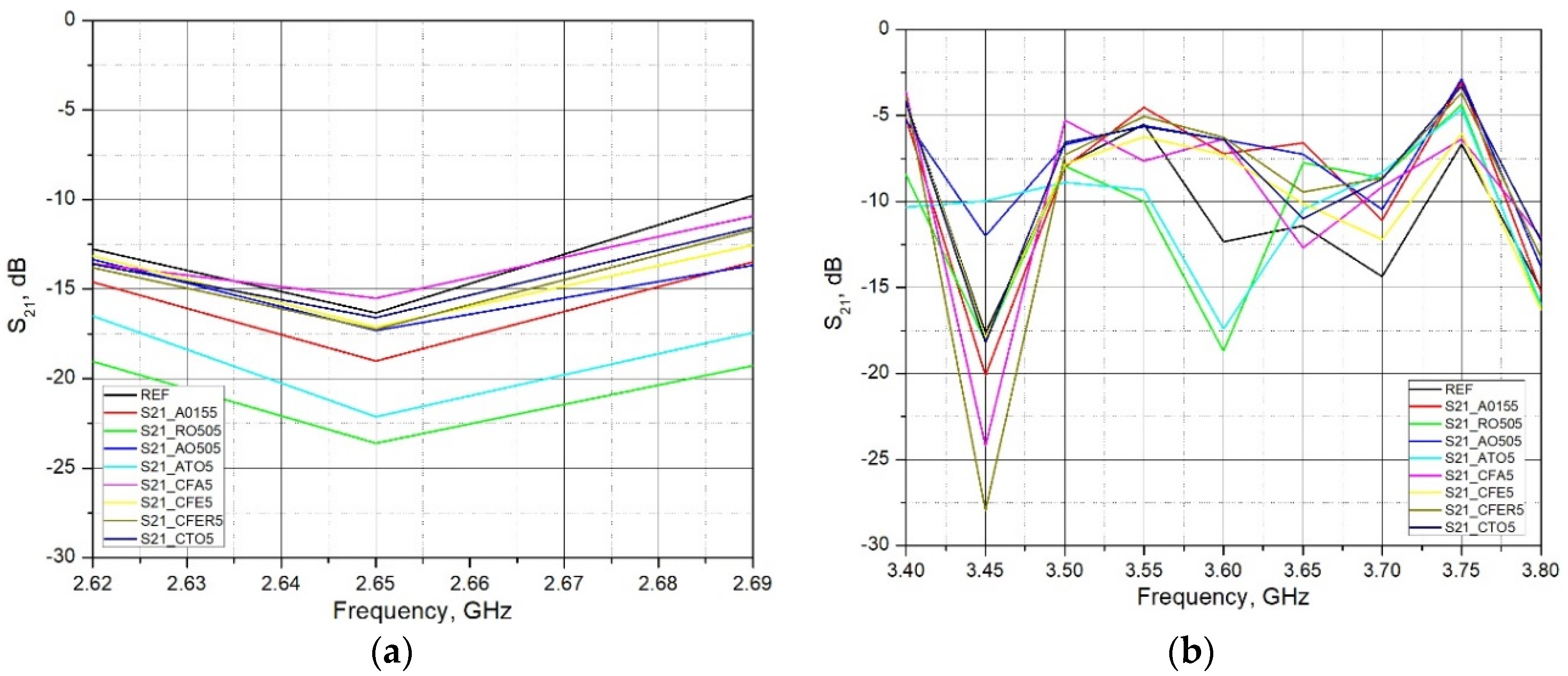
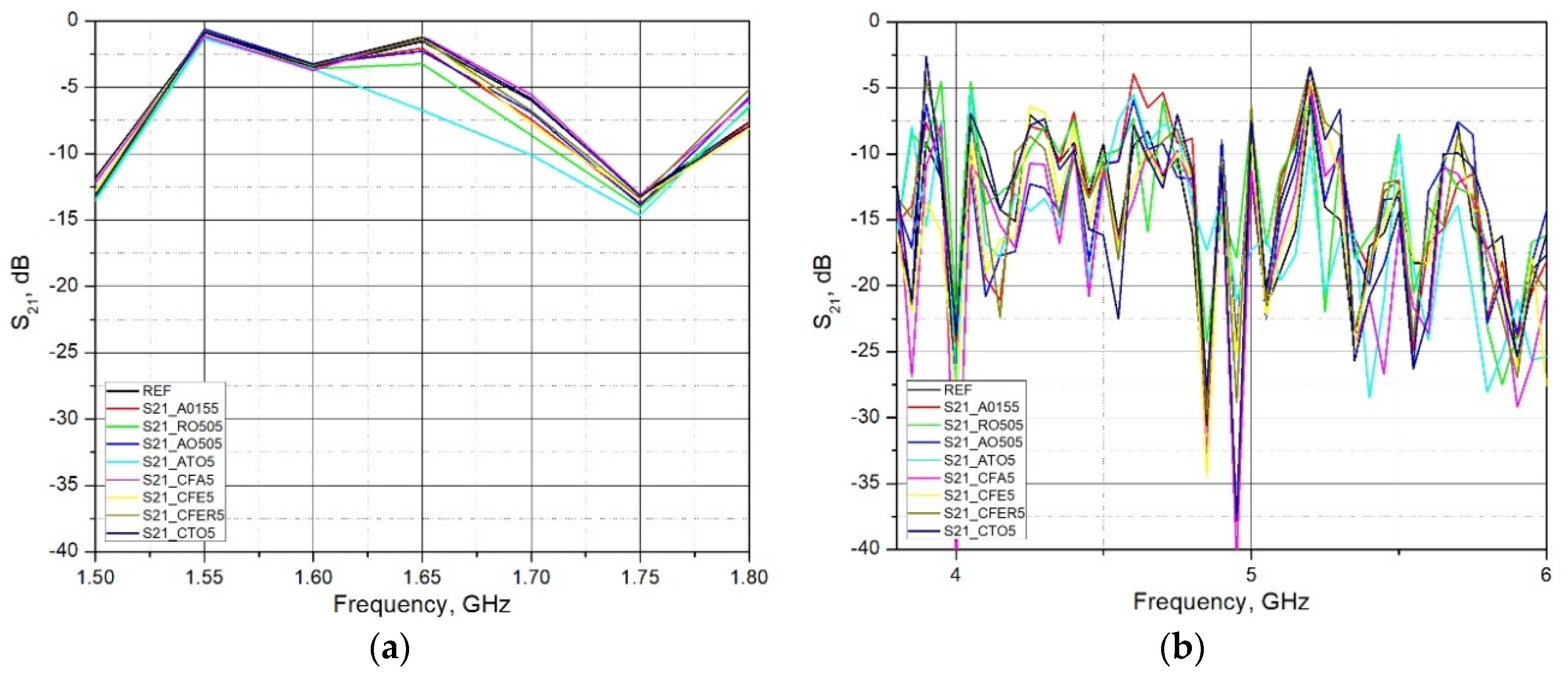
| Nanomaterials | SBET/ m2g−1 | Particle Size/ nm * | Weight Loss/ % |
|---|---|---|---|
| TiO2 Pretiox AV-01 FG | 10.18 | 200 | 0.6–2.1 |
| TiO2-A015 | 69.49 | 15 | |
| TiO2-A050 | 64.39 | 50 | |
| TiO2-R050 | 24.93 | 50 | |
| Fly Ash | 5.66 | 530 ** | <6.0 |
| ATO | 59.63 | 50 | |
| γ-Fe2O3 | 38.73 | 30 | |
| ZnFe2O4 | 74.01 | 15 | |
| Clay | 39.42 | *** | 50−160° 4.4 350−650° 9.0 |
| FLY ASH | CLAY | ||
|---|---|---|---|
| Element | Value/Mass. % | Element | Value/Mass. % |
| P | <0.01 | P | <0.01 |
| Na | 0.59 | Na | 0.89 |
| K | 1.38 | K | 2.12 |
| Ca | 20.44 | Ca | 4.05 |
| Mg | 3.76 | Mg | 1.98 |
| Al | 11.03 | Al | 14.19 |
| Ti | 0.67 | Ti | 1.36 |
| Fe | 6.83 | Fe | 3.79 |
| Si | 52.41 | Si | 71.52 |
| Mn | 0.22 | Mn | 0.02 |
| S | 2.66 | S | 0.06 |
| Heavy Metal | Value/ppm |
|---|---|
| Pb | 22.50 |
| Cd | 8.13 |
| As | 2.81 |
| Ni | 1145.0 |
| Hg | 0.071 |
| Cr | 620.50 |
| Mn | 1015.50 |
| Co | 33.80 |
| Additive | Label |
|---|---|
| Titanium dioxide | (A0505) |
| Titanium dioxide | (R0505) |
| Titanium dioxide | (A0155) |
| Titanium dioxide | (CTO5) |
| Antimony Tin Oxide | (ATO5) |
| Fly Ash | (CFA5) |
| γ-Iron (III) oxide | (CFE5) |
| Zinc Ferrite | (CFER5) |
Publisher’s Note: MDPI stays neutral with regard to jurisdictional claims in published maps and institutional affiliations. |
© 2022 by the authors. Licensee MDPI, Basel, Switzerland. This article is an open access article distributed under the terms and conditions of the Creative Commons Attribution (CC BY) license (https://creativecommons.org/licenses/by/4.0/).
Share and Cite
Vrdoljak, I.; Brdarić, J.; Rupčić, S.; Marković, B.; Miličević, I.; Mandrić, V.; Varevac, D.; Tatar, D.; Filipović, N.; Szenti, I.; et al. The Effect of Different Nanomaterials Additions in Clay-Based Composites on Electromagnetic Transmission. Materials 2022, 15, 5115. https://doi.org/10.3390/ma15155115
Vrdoljak I, Brdarić J, Rupčić S, Marković B, Miličević I, Mandrić V, Varevac D, Tatar D, Filipović N, Szenti I, et al. The Effect of Different Nanomaterials Additions in Clay-Based Composites on Electromagnetic Transmission. Materials. 2022; 15(15):5115. https://doi.org/10.3390/ma15155115
Chicago/Turabian StyleVrdoljak, Ivan, Jelena Brdarić, Slavko Rupčić, Berislav Marković, Ivana Miličević, Vanja Mandrić, Damir Varevac, Dalibor Tatar, Nikolina Filipović, Imre Szenti, and et al. 2022. "The Effect of Different Nanomaterials Additions in Clay-Based Composites on Electromagnetic Transmission" Materials 15, no. 15: 5115. https://doi.org/10.3390/ma15155115
APA StyleVrdoljak, I., Brdarić, J., Rupčić, S., Marković, B., Miličević, I., Mandrić, V., Varevac, D., Tatar, D., Filipović, N., Szenti, I., & Kukovecz, Á. (2022). The Effect of Different Nanomaterials Additions in Clay-Based Composites on Electromagnetic Transmission. Materials, 15(15), 5115. https://doi.org/10.3390/ma15155115








